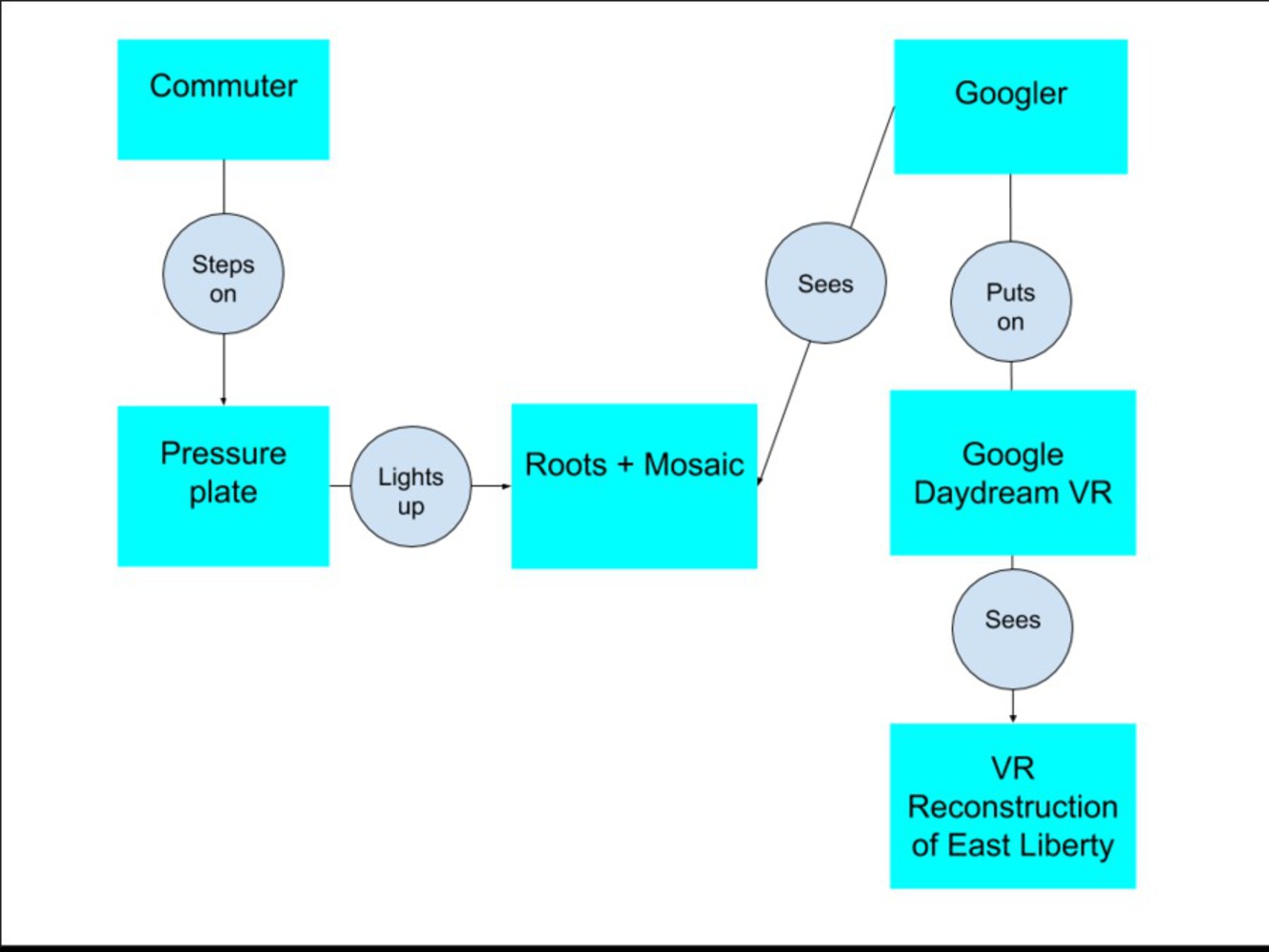The Rooted in Liberty installation is a combination of an exterior LED light sculpture, an LED mosaic floor, and a VR experience.
Outcome
Below the bridge are a series of piezoelectric tiles that act as pressure plates. When a commuter steps on the plate, the tile generates electricity and helps to power the installation. Once this signal is registered, the roots come to life, glowing with colored light. The light passes through the roots that appear to support the bridge, eventually intertwining into the message “LIBERTY” underneath the bridge. The bridge already features a set of LED lights that cycle through the Google color palette, meaning the existing lights can be refashioned to depict the "roots" motif.
The installation is meant to convey the foundation of the East Liberty community and its role in supporting Google’s office. Given the history of the area and the gentrification that took place, many of the original citizens of East Liberty were forced out of their homes due to rising living costs. Many of them have negative opinions towards Google as a consequence. In an attempt to pay tribute and generate awareness of the neighborhood, this installation depicts the colorful roots that have existed and currently exist in Bakery Square, originally established by the original citizens when it was known as East Liberty. However, these roots are able to beautifully convey the color and vibrant culture that the community features using LED lights.
On the bridge, the glowing “footsteps” are meant to remind to Googlers, residents of the building, and anyone crossing the bridge of those walking on the street below them. Like anyone living, working, or passing through the Bakery Square neighborhood, there were many who came before them. These “footsteps” intend to convey that there are many who came before Google entered the space. Additionally, Googlers and residents of the apartment building that walk across the bridge will have the ability to use Google’s Daydream VR headsets to explore the history of the East Liberty neighborhood through a reconstruction of the area.
Bill of Materials:
- A lot of wood, metal, and/or plastic resin to create the trunk and roots that house the LEDs.
- Plastic or Acrylic for the mosaic tiles.
- Piezoelectric tiles.
- Microcontrollers to receive the input data from the pressure plates and send the output signals to the LEDs.
- Google Daydream VR headsets.
- Google Pixels to go in the VR headsets.
You can upload files of up to 20MB using this form.


